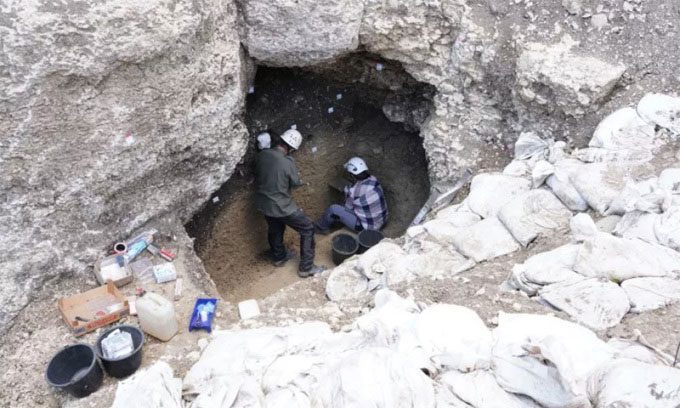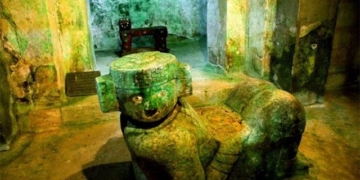Experts Discover Entrance to Ice Age Cave Once Inhabited by Humans, Now Hidden by Sediments.
During excavations in the town of Engen, in the district of Konstanz, southern Germany, a research team led by Dr. Yvonne Tafelmaier from the University of Tübingen uncovered the entrance to a cave that was inhabited during the Magdalenian period, approximately 16,000 to 14,000 years ago. Although the cave has been known to archaeologists for some time, the entrance had only recently been discovered, as reported by Newsweek on August 3.

Archaeologists exploring the original entrance of the Ice Age cave in Germany. (Photo: Simon Werner)
“Such discoveries are extremely rare in Paleolithic research, offering a chance to answer important questions about the behavior of late Ice Age hunter-gatherers using modern methods,” Tafelmaier stated.
Archaeologists had previously found a small section of the cave in 1978. They blasted a hole in the cave ceiling to investigate when the cave was used, discovering it may have served as a shelter for hunter-gatherers during the Ice Age. The hole was subsequently sealed, and further research was left for future archaeologists.
New excavations began in 2021. Over six weeks of work, experts collected additional data but still had not located the original entrance to the cave.
In April of this year, a team of scientists from the University of Heidelberg continued their investigation of the cave. They successfully identified the location of a 20-meter breach using imaging analysis. By July 4, they had excavated the original entrance of the cave, which had been completely blocked by sediments, making it very difficult to find.
During the excavation of the area, the team also discovered stone tools and animal bones from the Ice Age, Tafelmaier noted. They plan to continue their excavations at the site next year.
The ancient cave entrance is one of the recently discovered remnants from the Ice Age. In July, a lost fragment of a small ivory statue carved 35,000 years ago during the Ice Age was excavated at the Hohle Fels cave in Schelklingen, Germany. The famous statue was first discovered in 1999.


















































